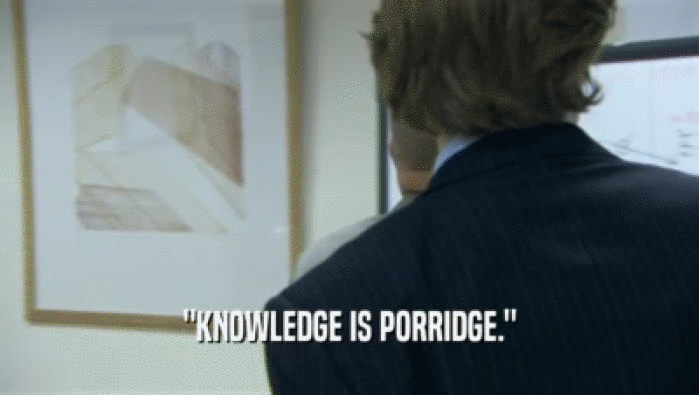“Go on… It’ll be fun!”
More often than not, it worked.
Usually the person needed convincing because they a) already had other activities planned b) didn’t have the energy or c) were scared of getting in trouble. These are all blocks we come up against in our working lives too. But as Serious Adults with Grown-Up Jobs, we need a few more tricks up our sleeves.
As a comms consultancy, we regularly speak to organisations about how to improve their research and policy communications. Working with our clients to bring their organisations on the journey with them is not easy.
So, if you’re out there trying to improve your research and policy comms and you’re finding it tough, here are a few tips we’ve picked up over the years.
Communicate communications
Communications has its own brand, and it’s not always good. Take fictional representations of marketing and PR types: like Siobhan Sharpe of the BBC’s branding agency in TV series W1A or Thick Of It’s Government Director Of Communications Stewart “Knowledge Is Porridge” Pearson. Both baffle and infuriate the people around them with their superficial solutions to complex problems, delivered in excruciatingly abstract gibberish.

I once heard of a think tank communications professional trying to convince her colleague about the benefits of getting a research report professionally designed. The response they got went something like: “If all we care about is how the report looks, why don’t we just put a picture of a horse on the cover and move on?”.
I don’t think this person just really loves horses. The real message here is, “my work is very serious and meaningful, I’ve worked hard on it, and what you’re saying feels reductive, infantile, frivolous”.
This demonstrates that we may need to reframe communications as we make the case for doing it better. A good friend of Cast From Clay, Helen Dempster, thinks of communications as ‘impact maximisation’. This isn’t a terminological sleight of hand. It gets all parties closer to the truth of what communications is for: ensuring the work our colleagues do makes a difference.
Think of it this way. We all agree that research, and the policy proposals that follow, from it are what matter most. But we also understand that even the best research would be undermined if it was full of typos.
The integrity of the research and how it’s presented are two ways we get our audiences to trust us to advise them, as they try to change things in their work.
Settle in
Frustration is a major barrier to progress. If you know what needs to change and you’re eager to change it, road blocks may make you restless, irritable.
Slow yourself down. Accepting that this will be a longer road than you’d like will not only help the process but it’ll also help you maintain your own sanity.
Listen
As a communicator I often have to remind myself that good communication involves at least 50% listening.
There’s usually a reason behind people’s resistance to change.
These reasons might resemble the ones your childhood friends had for not doing something fun. But in research and policy communications, the common ones we see are:
1. I’m afraid – I’m too busy and this is more work, I don’t want to look foolish, doing this is risky for me
2. I’m not convinced – I’ve got the wrong impression of you, I haven’t actually understood what you’re saying
3. I have reservations – I’ve tried something similar before and it hasn’t worked, I can foresee some problems ahead
Start by exploring where that ‘no’ comes from – respectfully and curiously. What you hear will help you understand the obstacles you and your supporters will need to traverse in the future.
Find your allies
If you’re struggling to convince the organisation as a whole, or key people in it, it’s worth changing your approach. Your advocacy needs to connect with a groundswell of support. In all likelihood, there are others in the organisation who agree with you – or who might be more easily persuaded than those you’ve spoken to so far.
You’ve understood the obstacles to change. Now map your potential allies. Which of your researcher colleagues is liking the articles you post on internal chats, or giving supportive feedback after your presentations? Which influential actors are nearly there, but just need a bit of a push? Once they’re clearly on side, work with them to champion your cause – especially at times when you’re not in the room.
If people keep hearing ideas raised elsewhere in the organisation, or in a different context, they may begin to resonate more widely. This also means that when the organisation does take action, you don’t bear sole responsibility for this evolution. Shared responsibility for change is fairer and helps to make it stick.
Break cover
To set a path others can follow, you need to be the first to tread a different course.
Even if it’s a small step. If you have an idea you know you can pull off, ask for forgiveness, not permission. These are usually the little wins that allow you to say “see, this is possible”, and build from there.
If you’re in the comms team, use Canva to make a short, simple research summary video in your lunch break. Draft a Twitter thread for a research lead to post so they don’t have to write it themselves. If you’re a researcher, try recording a qualitative research interviews to create short audio case studies around the launch, or try writing your own Twitter thread.
Once you’ve done this, you can then reverse engineer processes and products that allow you to do it again, quicker, better, next time. That way you build these products into funding proposals and get them paid for.
Be ready when the scales tip
If you’ve been banging the drum long enough about diversifying your communications, there will come a moment when suddenly someone turns to you and says “OK, come on then – let’s do it”. It’s scary to move from the hypothetical to the real. Be ready with a plan, however basic, when it happens so you – and your allies – can grasp the opportunity.
We hope you find this useful. Most of all, we hope you find it fun.
If you have tips that have worked for you we’re all ears. Share with us on Twitter @castfromclay
If you need help implementing this in your organisation, we can help. Get in touch.





